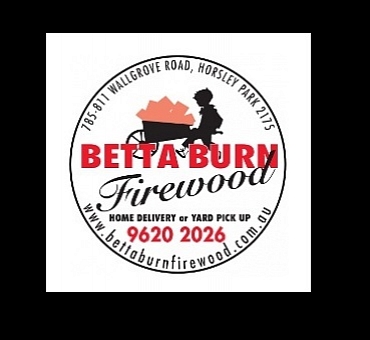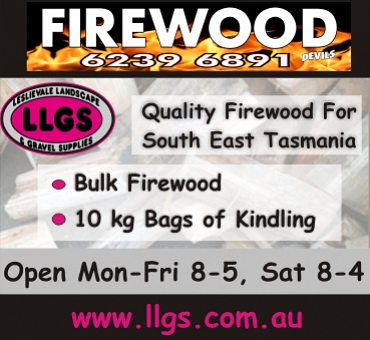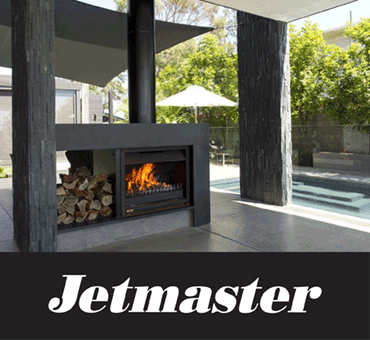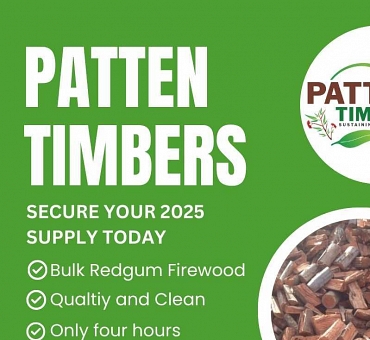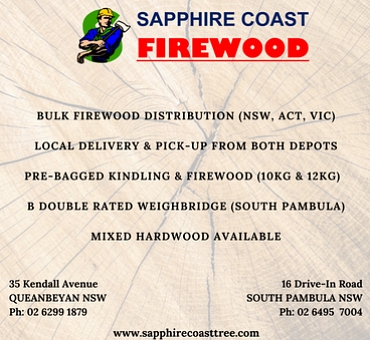Find a local firewood supplier
Frequently Asked Questions
Q. Are they going to ban wood heaters?
Although some local councils have placed restrictions on wood heater installations in recent years it is extremely unlikely that this will be widespread. The Penrith council proposed a state wide ban for NSW a couple of years ago but this was rejected by the Local Government & Shires Association. Wood heaters are in fact becoming more popular as energy and utility costs continue to rise. As long as wood heater users operate their heaters responsibly and do not emit large amounts of smoke, councils will have no reason to ban wood heaters.
Q. How can I tell if wood is dry enough to burn?
Water is present in all living trees as sap. Depending on the species there can be more water in wood by weight than there is wood fibre. Moisture content in wood is expressed as the percentage of water by weight compared to the weight of oven dried wood. If the weight of water in a piece of wood is the same as the oven dried weight of the wood then the moisture content is 100%. For wood to burn well it needs to be less than 25%, preferably between 12% and 20%. Except in very dry climates 12% is as low as wood moisture content will get.
The best way to tell if wood is dry enough to burn is to test it with an electrical resistance moisture meter. FAA members will have one of these. Otherwise you can usually pick dry wood from green by its weight, it will feel comparatively heavy. Or you can split a piece in half and see if the middle is a lot darker than the outside. The surface of freshly split wood will also feel cool to the touch if it is green due to the water evaporating. As a rough rule of thumb it will take about 6-12 months for green wood to get below 25% if it has been cross-cut into 300 mm rounds (this depends on the diameter of the log and the initial moisture content).
Q. Are we going to run out of firewood?
The answer to this question is definitely no. In some parts of the world and in earlier times mankind has totally cleared the landscape of trees. In Australia, as in most developed countries, the area under forests is now actually increasing. Human activities will undoubtedly change the nature and type of forest, but most governments now recognise the value of this renewable resource. On private land plantations targeted to produce firewood are increasing. For the time being though, the last 14 years of drought have resulted in an enormous number of trees dying in the lower rainfall regions. This will provide a secure supply of quality firewood for many years. Every year more trees die and are replaced with new ones. The recent floods will create an ideal situation for germination of River Red Gums, these will be a source of potential firewood in 50-100 years as they too die.
Q. Are old rail sleepers safe to burn?
The rail track environment makes it certain that all sleepers will be contaminated to some extent by grease, oil, herbicides and heavy metals. The fumes given off when these products are heated can be toxic. So it is best to avoid them. Some old sleepers may even contain deadly asbestos fibres from the brakes that were in use until mid 1980’s. A further risk is from small stones which become embedded in the sleepers. These can explode in the heat of a fire.
Q. Why is my neighbours chimney smoking?
Smoke is caused by the incomplete combustion of gasses given off when wood is burnt. The most common cause for this is incorrect operation of a slow combustion heater. If the air flow to the fire is closed off before the fire has reached correct operating temperature, the fire will smoke. The air vent to the fire needs to be left open for at least 15 minutes after wood is added to ensure the fire is hot enough to fully combust the gasses. This is a common problem and easy to fix. Smoke can also be caused by burning green wood or by a blocked chimney which restricts air flow. Both have the effect of cooling the fire below the correct temperature. If a fire is operating properly, you should not see any smoke from the chimney after the initial warm up period.
Q. Should I feel guilty about burning wood?
As long as you have purchased your wood from sustainable sources, you are actually helping the environment by heating your home with wood instead of gas or electricity. Wood is renewable bioenergy. It is recommended that environmentally aware wood users either buy their wood from FAA members or collect it from permitted areas. Collecting wood from roadsides and reserves can remove the protection it affords some wildlife, exposing it to predators such as feral cats and foxes. A CSIRO study in 2003 showed that firewood is virtually greenhouse neutral and is a useful way to reduce the carbon pollution from gas and coal energy use.
Q. What is sustainable firewood?
The Natural Resource Management Ministerial Council’s Firewood Taskforce has defined seven environmentally acceptable sources for sustainable firewood:
- Logging residues from sustainably managed forests and plantations.
- Residue or by-product from sawmilling or other wood processing operations supplied by sustainably managed forests and plantations.
- Wood collected from forest or woodland under government authorisation.
- Wood collected on private property under formal management plans or environmental guidelines.
- Wood from agroforestry, planted shelterbelts, planted windbreaks or waste timber.
- Salvage of waste timber from approved harvesting on private or public land.
- Recycled or waste timber from tree lopping, building demolition or urban salvage.
Firewood from any of these seven sources is accepted as complying with the Code of Practice.
Q. Should I buy wood by the cubic metre or tonne?
Both methods are legal and are covered by the National Measurement Act. To find out more about the laws of selling firewood go to the National Measurement Institute’s web site. www.measurement.gov.au. Because all dry wood contains almost the same amount of energy per kilogram, buying by weight is probably safest. You will be paying for the energy you actually get, much the same as with gas or electricity, but you will also be paying for any water in the wood as well. The moisture content of "dry" firewood should be less than an absolute maximum of 25%.
A cubic metre of wood cannot be measured as accurately as a tonne, however you will not be paying for any water. Generally, the higher the density of the wood the better value you will get per metre. It is not possible to compare cubic metres with tonnes because of the differences in wood density, moisture content and how well the wood has been stacked for measurement.
Q. What is the best firewood?
The answer depends to a large extent on what wood is available. For example in Western Australia, Jarrah and Wandoo are considered the best. In Tasmania, Brown Peppermint is considered best. In South Australia, Victoria and southern NSW it is generally River Red Gum. In Queensland, Ironbark and Box are preferred. It also depends on what you are using the wood for. Red Gum is excellent in a slow combustion heater but does not burn with a lot of flame, so other species are usually preferred for open fires. Some species are known to not burn well at all, Turpentine and White Stringybark being two of these. Each species has its own characteristics of burning rate, flame, coal and ash generation, which mainly relate to wood density and the chemical composition of tannins etc. Perhaps the best thing to do is to try a range of the available species and pick the most suitable, which may be a mix of quicker and slower burning species.









